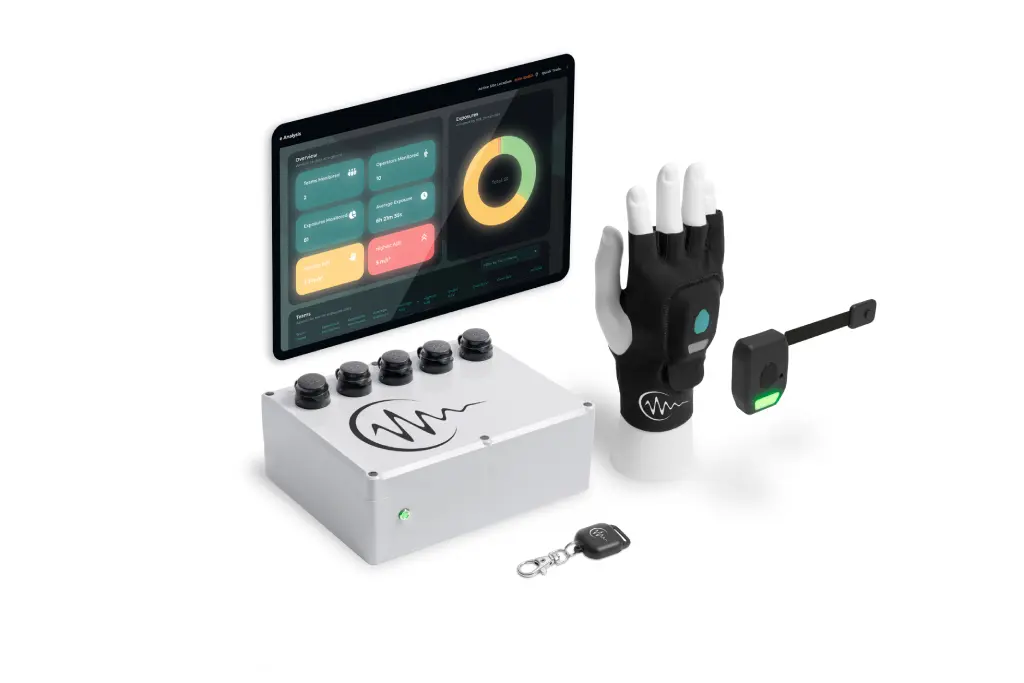How Employers Can Stay Compliant with HAVS Regulations
Under the Control of Vibration at Work Regulations 2005, employers have a legal duty to protect their workforce from Hand-Arm Vibration Syndrome (HAVS).
For businesses in construction, manufacturing, engineering, and other industries, understanding their employer HAVS obligations is non-negotiable. The consequences of failure are severe, ranging from life-changing injuries for employees to six-figure fines and irreparable damage to a company's reputation. This isn't just a legal requirement. It's a moral one.

The Reality of HAVS in the UK
HAVS is caused by prolonged use of vibrating tools like grinders, jackhammers, and road breakers. Over time, the constant exposure damages nerves, blood vessels, and joints, causing symptoms such as tingling, numbness, and permanent loss of dexterity.
The HSE estimates that 2 million workers are at risk of developing HAVS in the UK. However, despite increasing awareness, businesses are still being fined for their lack of action.
Earlier this year, two workers employed by Stonewater Limited were diagnosed with HAVS after using vibrating tools for up to 90% of their working day. The company was fined £140,000 for failing to prevent exposure (HSE News, April 2025).
In June, Robinson Brothers Ltd was fined £100,000 after nine employees developed HAVS. The HSE found they had been exposed over 14 years without effective control measures (HSE Press Release, June 2025).
These instances are not anomalies and shouldn’t be treated as such. They should be treated as warnings from employers moving forward.
Employer HAVS Obligations: What the Law Requires
UK law mandates that employers must assess and manage vibration risks under the Control of Vibration at Work Regulations 2005. Here’s what’s legally expected:
1. Tool Vibration Assessments
Every employer must assess the level of vibration produced by tools. This includes understanding the vibration magnitude (m/s²) and duration of use (trigger time).
Failing to perform tool vibration assessments is one of the most common breaches cited by the HSE.
2. Exposure Action Values
Exposure Action Value (EAV): 2.5 m/s² A(8) – where employers must take action to reduce exposure.
Exposure Limit Value (ELV): 5 m/s² A(8) – the maximum legal daily exposure.
Measuring these thresholds isn’t a one-time tick-box, it is a regular activity resulting in continuous improvement of control measures to reduce exposure..
3. Health Surveillance
If your workers are regularly exposed to vibration at or above the EAV, you must implement a structured health surveillance program to detect early signs of HAVS.
4. HAVS Audits for Businesses
HSE recommends regular HAVS audits to ensure continued compliance. This includes reviewing equipment data, assessing working practices, and validating that mitigation strategies are effective.
The Cost of Non-Compliance
Let’s be clear, non-compliance is expensive.
Cost Factor | Average Loss |
HSE Fines | £100,000–£800,000 |
Legal Fees & Compensation | £30,000–£60,000 per claim |
Productivity Loss | £500/day per affected worker |
Reputation Damage | Unquantifiable but lasting |
And then there’s the human cost. Workers affected by HAVS often lose their careers, face chronic pain, and struggle with everyday tasks, all of which is completely preventable with the right processes in place.
How to Stay Compliant with HAVS Laws
1. Implement Regular Tool Vibration Assessments
Use real-time tracking or log sheets to record vibration exposure. But be aware; manual logs often underreport usage, creating false compliance.
Digital solutions offer accurate data, accountability, and automatic reporting.
2. Train and Rotate Staff
Not every worker is aware of what HAVS feels like, until it’s too late. Training is critical. Rotating staff between tasks can also reduce exposure time.
3. Use the Right Tools (and Maintain Them)
Some tools emit higher vibrations as they wear down. Poor maintenance directly increases risk. Choose tools designed for reduced vibration and inspect them regularly.
4. Conduct HAVS Audits and Document Everything
Audits should evaluate:
Vibration data for each tool
Actual usage vs. safe limits
Corrective actions
Health records and incident reports
Documentation not only keeps you compliant, it also defends against claims.
How to Avoid HAVS Claims
Here’s what successful businesses do to protect their workforce and avoid legal action:
Use automated exposure tracking
Implement evidence-backed audit trails
Proactively intervene when exposure trends rise
Align processes with HSE guidance and limits
When claims arise, data wins. If you can't prove you're protecting your people, you'll pay the price.
HAV-Sentry: The Smart, Subtle Solution
This is where HAV-Sentry becomes essential.
Rather than relying on rough estimates or manual logging, HAV-Sentry captures real-time vibration data per tool, per worker, per shift. It gives you automatic alerts, health surveillance integration, and exportable audit trails, all in one platform.
With features like:
Intelligent tool vibration assessments
Continuous worker-level exposure tracking
Automated HAVS audits for businesses
Seamless integration with your health & safety system
You don’t have to choose between compliance and complexity. HAV-Sentry ensures your people are safer, and makes compliance simple.
Compliance isn’t just a box to tick exercise, it plays a key part in culture. And when your business makes the right moves today, your workforce feels it tomorrow.
Protect your workers, safeguard your business and stay ahead of the law.
And if you need help doing that, HAV-Sentry is ready when you are.